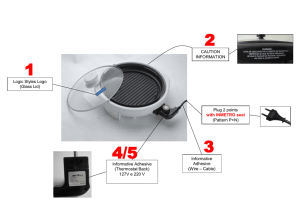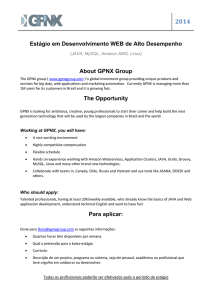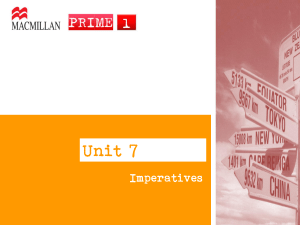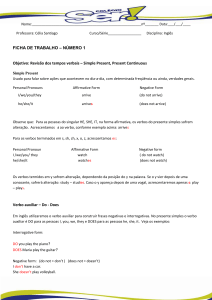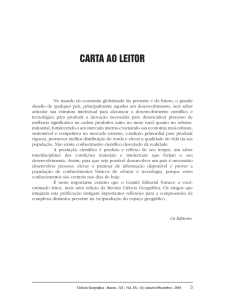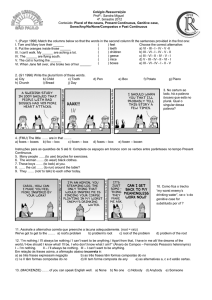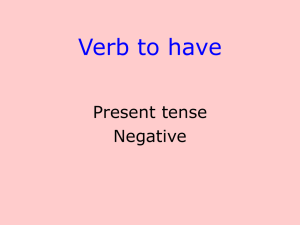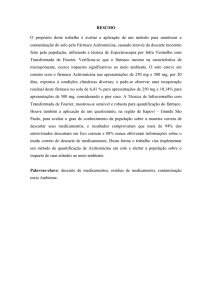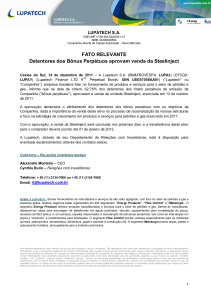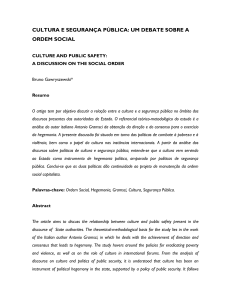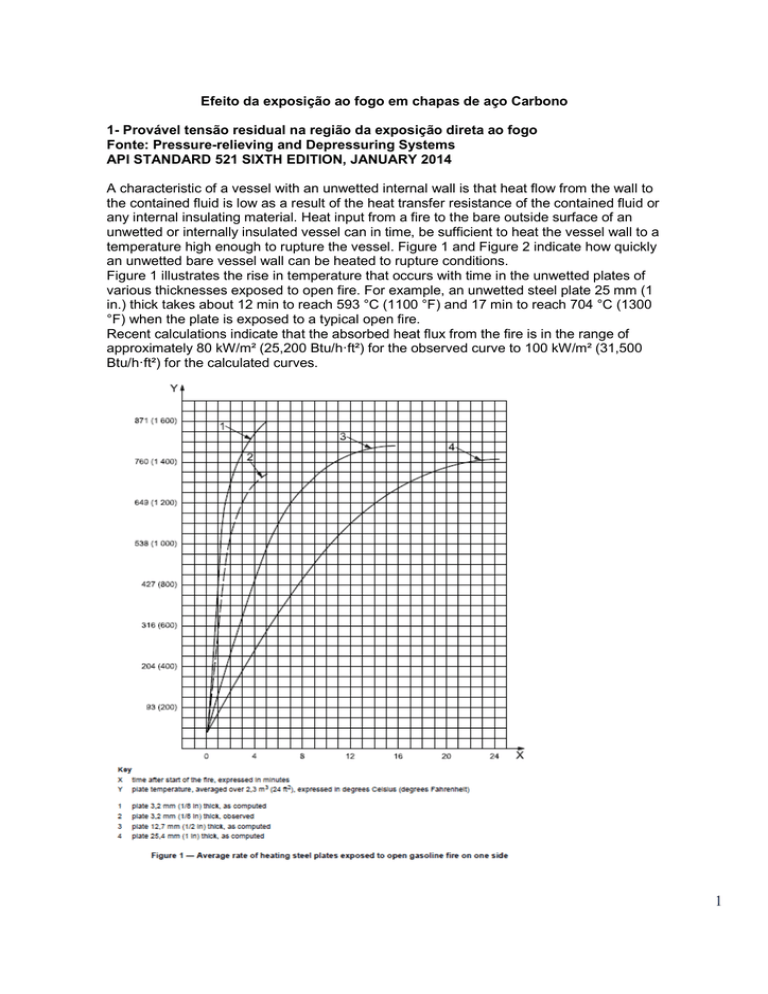
Efeito da exposição ao fogo em chapas de aço Carbono
1- Provável tensão residual na região da exposição direta ao fogo
Fonte: Pressure-relieving and Depressuring Systems
API STANDARD 521 SIXTH EDITION, JANUARY 2014
A characteristic of a vessel with an unwetted internal wall is that heat flow from the wall to
the contained fluid is low as a result of the heat transfer resistance of the contained fluid or
any internal insulating material. Heat input from a fire to the bare outside surface of an
unwetted or internally insulated vessel can in time, be sufficient to heat the vessel wall to a
temperature high enough to rupture the vessel. Figure 1 and Figure 2 indicate how quickly
an unwetted bare vessel wall can be heated to rupture conditions.
Figure 1 illustrates the rise in temperature that occurs with time in the unwetted plates of
various thicknesses exposed to open fire. For example, an unwetted steel plate 25 mm (1
in.) thick takes about 12 min to reach 593 °C (1100 °F) and 17 min to reach 704 °C (1300
°F) when the plate is exposed to a typical open fire.
Recent calculations indicate that the absorbed heat flux from the fire is in the range of
approximately 80 kW/m² (25,200 Btu/h·ft²) for the observed curve to 100 kW/m² (31,500
Btu/h·ft²) for the calculated curves.
1
Para fogo “rápido” se admite que durante 15 minutos, tem-se a temperatura de chapa da
ordem de 750ºC, com chapa de 19 mm. Isso leva a uma redução da tensão de ruptura
para cerca de 8 000 psi.
Pela literatura ASTM DS 11S1 a tensão de escoamento a 1400ºF é 6000 a 7500 psi, logo
“bate” com a informação colhida do API.
2- Provável tensão residual nas regiões afastadas da exposição direta ao fogo
Nas regiões onde houve deformação plástica, isto é alguma deformação, a tensão
residual é da ordem do escoamento a frio (por segurança): 30 000psi.
3- Tensão de compressão máxima admissível
A tensão admissível à compressão local é o fator B do ASME Sec II Part D.
4- Outras informações conforme API-579, para a estimativa da temperatura atingida
sob o fogo.
2
4- Evolução da temperatura em caso de exposição a fogo de Hidrocarboneto
3

